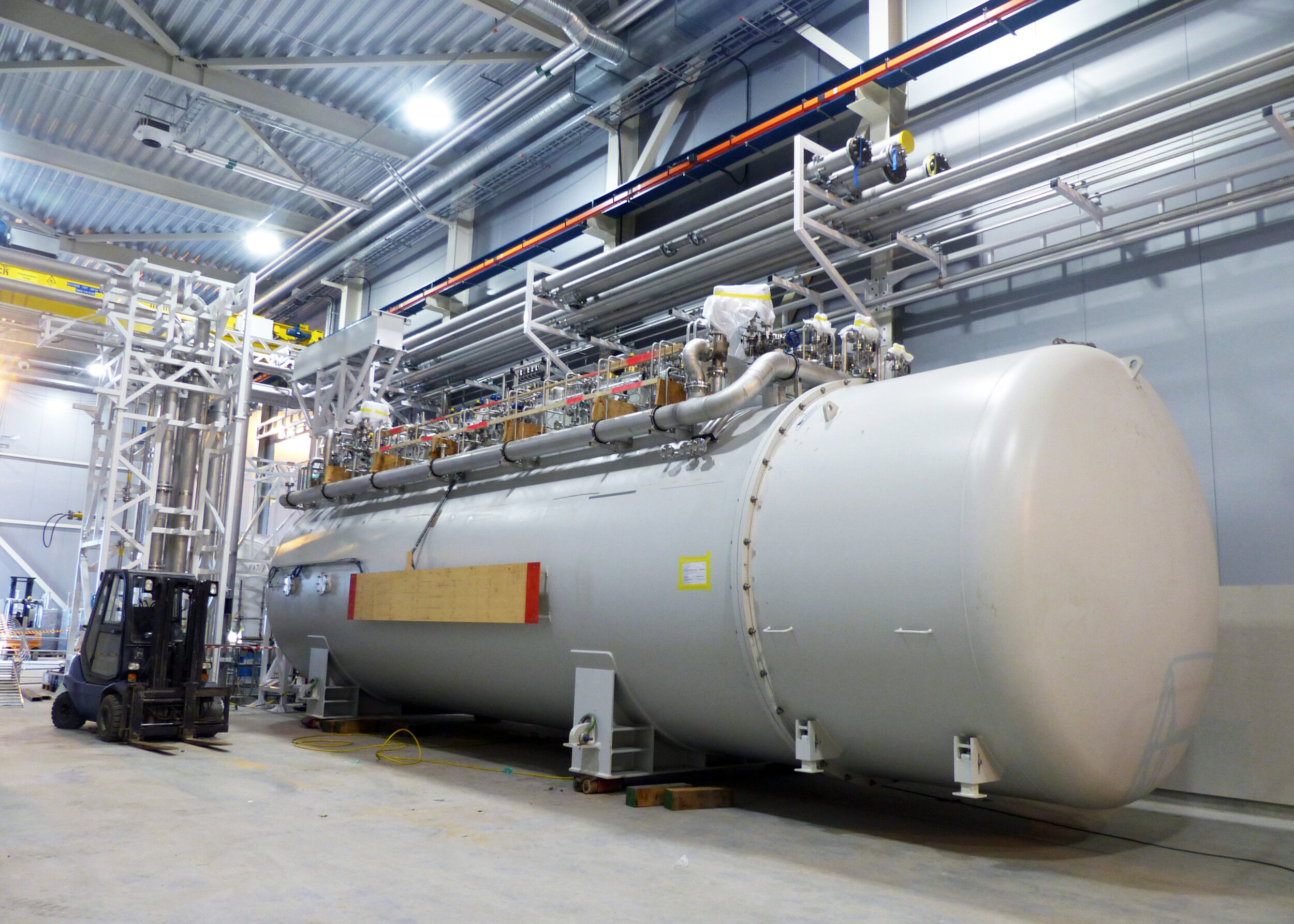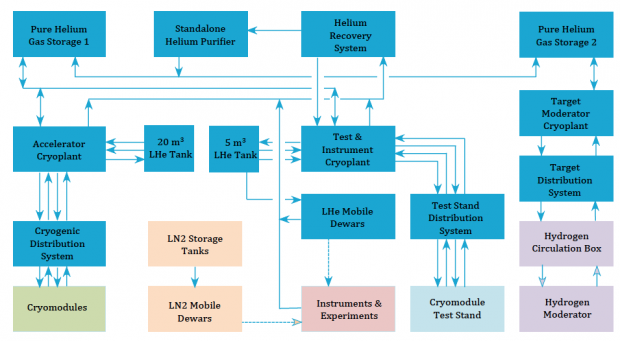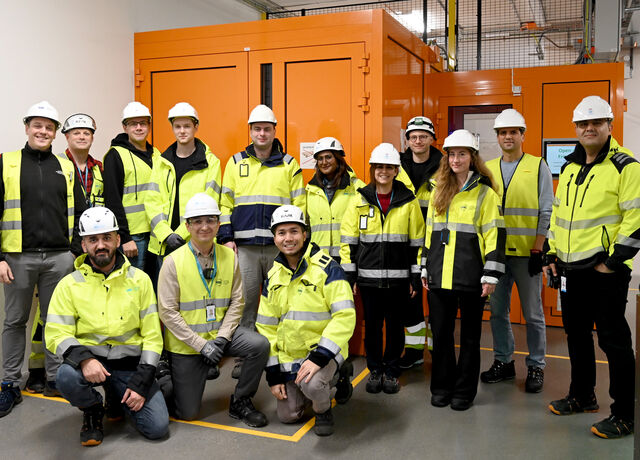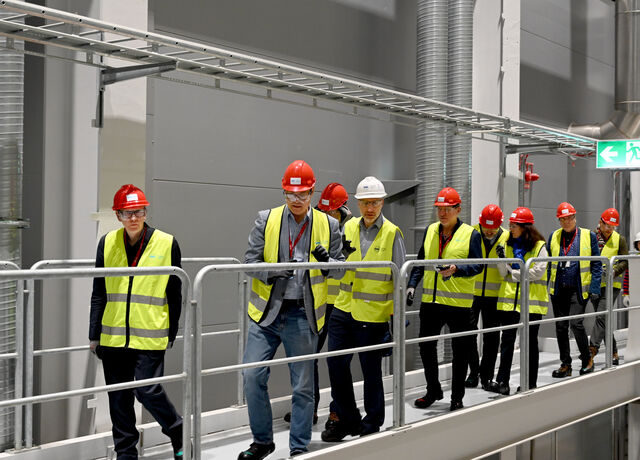Cryogenics
Cryogenics is the science and technology of phenomena below a temperature of 120 K (-153°C).
Cryogenics plays an important role at the European Spallation Source, where three principal applications of cryogenics are found: The SRF cryomodules of the ESS proton linac require cooling at 2 K, 4.5 K and 40 K; the hydrogen moderator surrounding the target that produces neutrons requires cooling through 16 K helium; and liquid helium and nitrogen are required for many of the scientific instruments. These needs will be met by a set of three cryogenic refrigeration/liquefaction plants and an extensive cryogenic distribution system.
The accelerator cryoplant (ACCP) is the largest and most complicated of the ESS cryoplants, and mainly serves to cool the superconducting RF cavities in the cold part of the linac. There are 13 spoke cavity cryomodules, nine medium beta elliptical cryomodules and 21 high beta elliptical cryomodules. There is also contingency space in the accelerator lattice for an additional 14 high beta cryomodules that might be required to achieve the nominal beam energy of 2 GeV. All the SRF cavities operate in saturated 2 K He II baths. Each of the cryomodules also contains a 40 K thermal shield and a helium cooling circuit for the RF power couplers.
The cryogenic distribution system (CDS) connects the ACCP to the cryomodules in the ESS tunnel. Vacuum barriers separate each cryomodule’s isolation vacuum from that of the distribution line. Each cryomodule is connected to the corresponding valve box on the distribution line via an all welded vacuum insulated jumper connection. 2 K helium is created separately for each cryomodule. The cryogenic distribution line supplies helium at 4.5 K and 3 bar, which is passed through a pre-cooling heat exchanger and then expanded via a Joule-Thompson valve into the 2 K bath surrounding the SRF cavities. Sub-atmospheric vapour pumped off the 2 K bath passes back through the pre-cooling heat exchanger and is returned to the ACCP.
The target moderator cryoplant (TMCP) provides cooling for the 20 K supercritical hydrogen moderators that surround the target. These moderators reduce the energy of the neutrons to values more interesting to researchers. Heat deposited in the moderators is absorbed by a hydrogen cooling loop, which is in turn connected via a heat exchanger to a 16 K helium flow from the TMCP. As such, the TMCP is the heat sink for the heat deposited in the moderator.
The Test and Instruments Cryoplant (TICP) has two roles: During the construction phase, it provides cooling to the elliptical cryomodule test stand at the ESS site, and during operations it will provide liquid helium to the scientific instruments, as well as providing cooling for the occasional cryomodule test.
Auxiliary equipment for the overall cryogenic system consists of helium gas storage at medium pressure, liquid helium storage tanks for the ACCP and the TICP, a helium recovery system with gas collectors, high pressure compression, purification system and high pressure storage. Additionally, there will be a liquid nitrogen supply at different locations and a helium infrastructure with mobile dewars for LHe supply and satellite recovery systems in the neutron instruments halls.






























